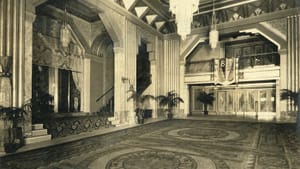Stay in the Loop
BSR publishes on a weekly schedule, with an email newsletter every Wednesday and Thursday morning. There’s no paywall, and subscribing is always free.
An elegy for the Boyd Theater

I am in the midst of a move. For any person who has been in one place for more than a few years, you know the drill — go through your stuff and either toss it or pack it. Many years ago, when I moved into my current abode, I packed most of it — and it is still packed.
Tossing the junk of our past is central to the experience of moving. You’re both sloughing off old skins and destroying a piece of who you were.
Cities are like people. Every day, a city tosses off the old and makes room for the new.
Few can argue with the success that Philadelphia has seen in recent years. The new buildings and towers have revitalized Center City. A buzz now exists in many places where there was just the hum of cars zipping through Center City headed toward their suburban homes.
In the rush to the future, it cannot be helped if a few small gems are crushed. Bulldozers stampede over art, artifacts, and junk indiscriminately. Broad Street south of Spruce, Market Street East, and other areas have been sacrificed at the altar of Mammon and progress.
Another loss
This past week, the bulldozers were busy again. After a 13-year battle, the forces of preservation have lost the war — the Boyd Theater is gone.
Most of you have never been in the Boyd so you don’t know what you are losing. It is difficult to explain the wonder, the thrill, the joy of entering a great theater. Today, the most the multiplex has to offer is a pushback seat.
The Boyd was the premier place to see a movie in Philadelphia from its opening in 1928. It was Philadelphia’s first and only Art Deco theater. Thirty years after its opening, I first entered its opulent lobby,  staring upward to take in the art deco etched glass, chandeliers, and carvings. It was my birthday and my Uncle Rocky was taking me to see Ben Hur, a Roman epic extravaganza that was made to be seen at the Boyd on the largest screen in Philadelphia. Luckily, we were seated in the balcony. From that vantage, we could see the chandelier change colors with the dancers forming a Cézanne-like circle around it; the Amazon Queen and her beautiful attendants; and the etched silver embossed figures depicting modern women in all the world’s cultures.
staring upward to take in the art deco etched glass, chandeliers, and carvings. It was my birthday and my Uncle Rocky was taking me to see Ben Hur, a Roman epic extravaganza that was made to be seen at the Boyd on the largest screen in Philadelphia. Luckily, we were seated in the balcony. From that vantage, we could see the chandelier change colors with the dancers forming a Cézanne-like circle around it; the Amazon Queen and her beautiful attendants; and the etched silver embossed figures depicting modern women in all the world’s cultures.
The screen was huge: Originally 50 x 30 feet, it was expanded in the 1950s, widening it so that it seemed to stretch beyond the four walls of the theater. Watching Ben Hur’s chariot scene on that screen with the best audio system available, I became a lifelong movie fan.
Stepping into the past
In subsequent years, I saw many movies there, some worthy of their surroundings, most not. But it was always a thrill to enter the Boyd’s august presence. The craftsmanship on display reminded me of a different era when the movies sought to do more than give the people what they wanted — it gave them something they needed,  a place to capture their imaginations and inspire them.
a place to capture their imaginations and inspire them.
Just when people are starting to want to see movies the way they were meant to be seen — in real movie theaters and not in a box with a screen — Philadelphia crushes any hope that it would be part of the trend. Instead of purchasing the theater and running it as a tourist attraction, as a place for people to experience the thrill of moviegoing, Philadelphia has once again dropped the ball — in this case a wrecking ball — on its future.
Maybe people can embrace their futures with more confidence when they have tossed away the old photos, the worn-out chairs and rugs, the memorabilia of a lifetime. Cities, on the other hand, must embrace their futures with the confidence that not everything that is old is bad. There was a time in the 1950s when “progressive” Philadelphians built that sad row of faceless buildings on west Market Street, the Penn Center complex. They wanted to complete the progress of the city by bulldozing City Hall. Lucky for us, they didn’t prevail — and that was their legacy. What they saved.
When people look back on the Nutter years, whatever success his administration may have had will be overshadowed by its failure to keep this one piece of Philadelphia’s glorious past — to preserve just one grand movie palace, one place to go and dream.
For an interview with Howard Haas, president of the Friends of the Boyd, click here.
For an interview with Hamid Hashemi, the CEO of iPic, a company that wanted to develop the Boyd site, click here.
For a consideration of the pros and cons of preservation by Rich Heimlich, click here.
Sign up for our newsletter
All of the week's new articles, all in one place. Sign up for the free weekly BSR newsletters, and don't miss a conversation.
 Armen Pandola
Armen Pandola